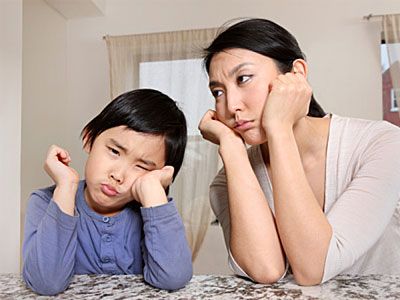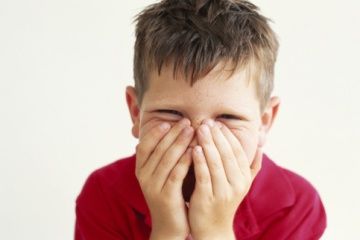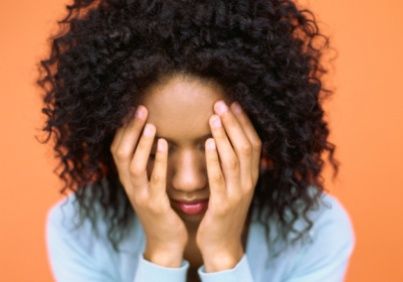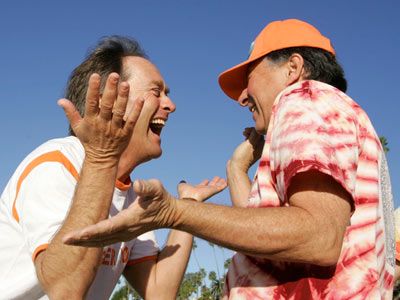
It's inevitable -- we humans bring out the best and worst in each other. See the spectrum of human emotions and learn more about them. Let's start at the beginning ...
Advertisement

From infancy, we're able to interpret the emotions behind facial expressions. We humans -- and most other animals -- appear to be equipped with a set of predictable responses to situations. We call these the basic emotions: anger, fear, surprise, disgust, sadness and joy. See the next page to explore the variations of these feelings.

Anger is a natural emotion that alerts us when something has violated the natural order of how we think things should go.

Feeling ignored, or feeling that we're not getting the same as everyone else, can also lead to anger. The bodily effects of anger are meant to motivate us to take charge and restore the balance of right and wrong.

If you've ever been jealous, you've experienced a form of anger too. Cultural psychologists tend to believe that humans are inherently jealous, simply because our jobs, relationships and material goods mean a lot to us, and we don't want to lose them. Learn about fear next.
Advertisement

The process of fear begins with a scary stimulus and ends with the fight-or-flight response. Signs of this emotion include increased heart rate, tense muscles and dilated pupils. A lesser form of fear is on the next page.

Most people are apprehensive or uneasy when going to the doctor. Restlessness or tightness in the stomach may be signals to this emotion. Next, see an emotion you might have felt at a party.

Surprise is also considered a basic emotion. Reactions can be positive, negative or neutral to the unexpected event. A facial clue to surprise is raised eyebrows.

Anticipation is the opposite of surprise and involves eagerness for a future event. Here, Phyllisea Jones and Dean Peltier were so eager for their iPhone that they waited outside an Apple store overnight.

Well, she has the right idea with the gloves on. Disgust is another basic emotion and usually is in response to something that is considered offensive or unclean, like this bathroom. If taken to extreme, disgust may lead to the next feeling.
Advertisement

Hate involves both the interior, primitive parts of the brain and the parts that developed relatively late in human evolution. Fear, anger and a sense of personal injury is usually involved. Injury, especially emotional injury, can cause the next emotion.

Sadness often involves a sense of loss or helplessness and is associated with tears. Some scientists believe that emotional crying is the body's way of ridding itself of stressed-induced toxins. Learn more about sadness next.

Disappointment is another form of sadness, which occurs when an expectation or hope is not met. The next variation of sadness might surprise you.

Embarrassment involves feeling discomfort with oneself after experiencing an awkward social situation. If you are more remorseful than amused at your blunder, you might experience the next emotion.

Shame usually involves feeling regretful and remorseful in regards to breaking a social or cultural value. Perpetual sadness or feelings of regret may lead to the next condition.
Advertisement

Depression is an extended period of sadness. There are a number of depressive illnesses, including major depression, chronic depression, bipolar disorder and Seasonal Affective Disorder (SAD). Symptoms can include loss of interest in activities, forgetfulness, indecision and changes in eating and sleeping patterns. Learn how to stay positive next.

Joy is the last basic emotion on our list. Joy can be heightened by pleasure, relationships, meaning in life, goals and engaging activities. Learn more on the next page.

Feeling optimistic? Then you are experiencing a form of joy, like Snoop Dogg at The Happy Ending Bar & Restaurant. Find out what influences joy next.

Most people studying happiness have concluded that there is a genetic predisposition toward happiness. About half of people's happiness quotas are genetic. The activity on the next page also helps maximize positive feelings.

If you don't have a big grin on your face from the idea of running on a treadmill, maybe you've never reached that endorphin high. Exercising reduces the amount of cortisol -- a stress hormone -- in the blood and pumps up the volume of endorphins. Or you can get endorphins through the means on the next page.
Advertisement

People who have close relationships with others also tend to be happier. Love activates the release of dopamine, a neurotransmitter in the brain that makes you feel elated.

On the other hand, lust involves thinking or acting on sexual desire and is a secondary emotion of love. It increases testosterone levels in both men and women. While lust can be temporary, the next form of joy can be longer lasting.

Experiencing a sense of pride over accomplishments is a form of joy you can obtain on your own.

Or, just find something to be amused about. Human beings love to laugh, and the average adult laughs 17 times a day. Laughter reduces levels of certain stress hormones, so no wonder it helps us feel more joyful!

For the most part, happiness is our responsibility, whether that means surviving on your own or finding true love. To learn more, see 10 Tips From Happy People or test your knowledge with the Emotions Quiz.
Advertisement